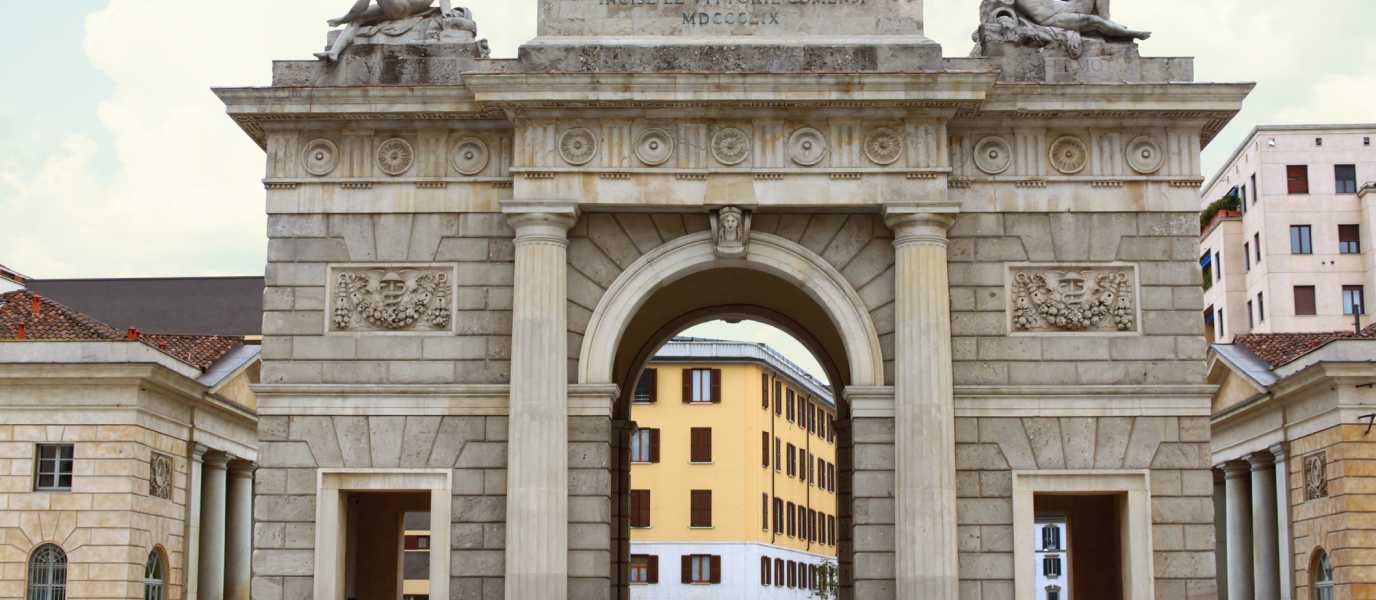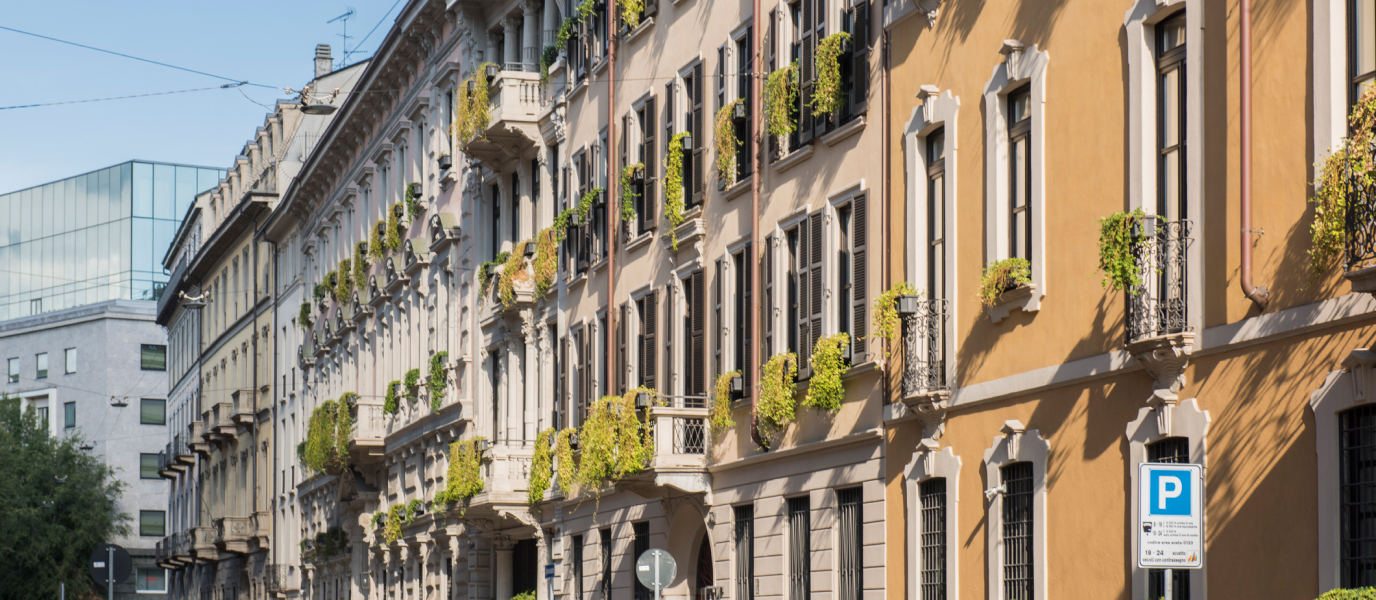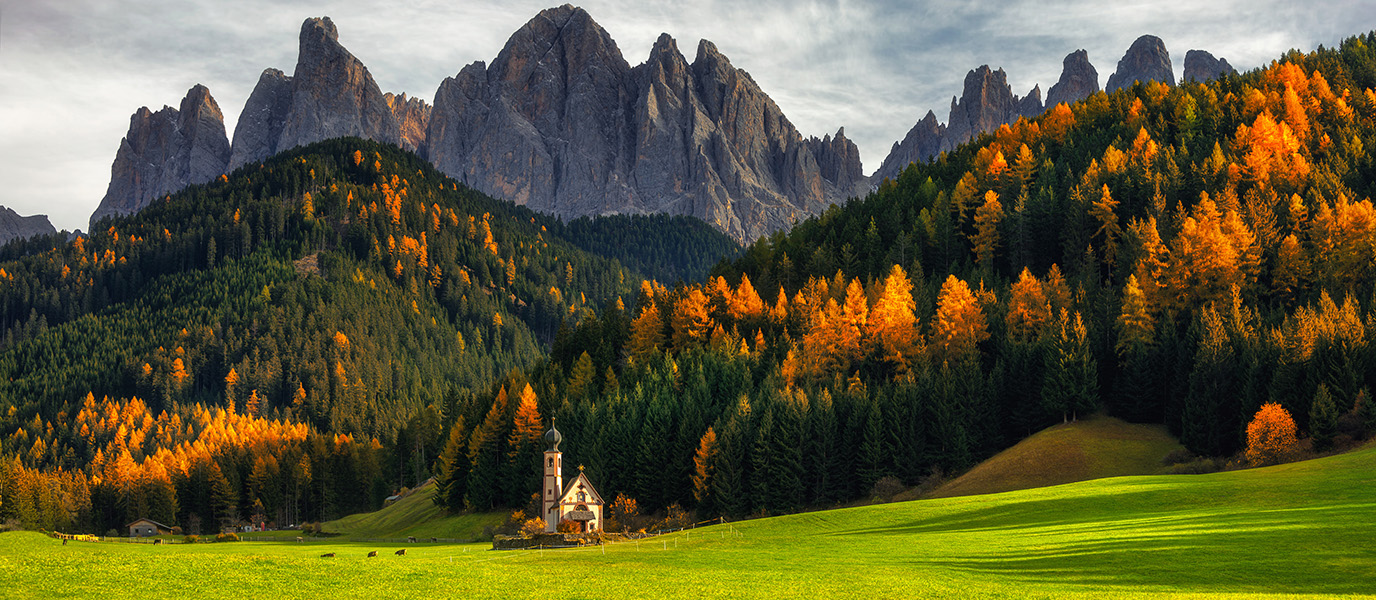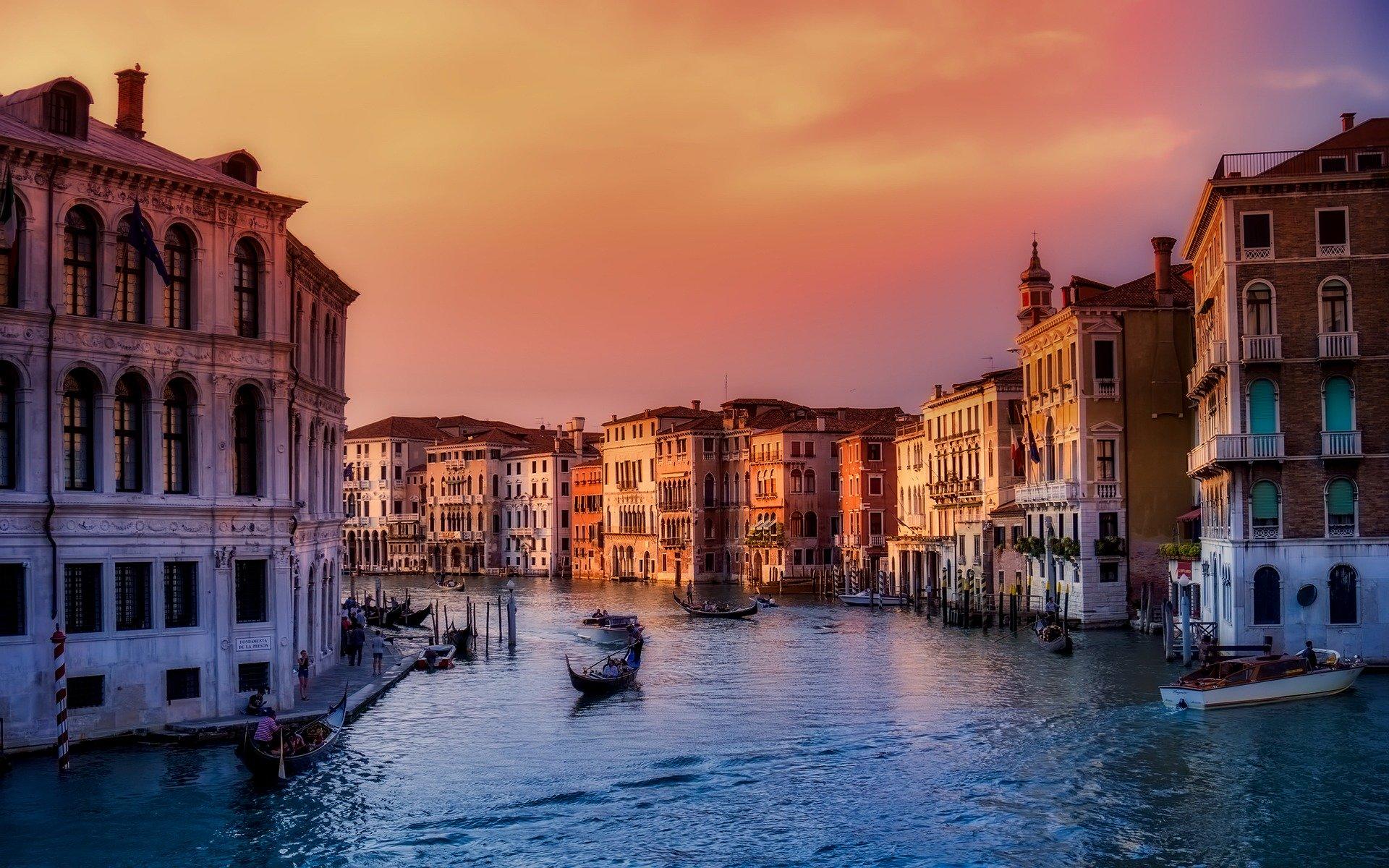Navigli neighbourhood is one of the liveliest parts of Milan and was named for the distinctive canals that pass through the area, a feat of engineering that originally brought water to Milan from the Ticino and Adda rivers. Work began in the Middle Ages and the canals were one of the city’s main sources of economic strength until its definitive decline in the 1970s.
Since then, Navigli has seen unstoppable gentrification until it has become the area we know today: the backdrop to Milan’s bohemian life, lined with bookshops, designer boutiques and bars. It’s definitely an essential place for going out in Milan. (link to Going out in Milan). The area has endless attractions: boat rides along the canals, exploring artists’ studios and shopping in original boutiques by day, and going for drinks in sophisticated bars at night.
The vital canals of Navigli neighbourhood
Construction began on the Navigli canals in the 12th century and they were originally agricultural in purpose, used to irrigate the fields and drive the mills. The waterways eventually reached the city itself and in 1386 became a mode of transport in their own right; a large quantity of the stone used to build the Duomo of Milan was brought to the city along the canals.
Leonardo da Vinci, as ducal engineer working for Ludovico il Moro, planned new canals and added an innovative system of dams to make navigation easier. The success of the canal network made Milan the most important river port in Europe up until the 19th century. However, the rise of the railway and other modes of transport from the 19th century onwards saw the canals fall into disuse. Public health reasons and general lack of use meant many of the canals were paved over and turned into streets from the 1930s onwards. Bombing during the Second World War put the remaining canals out of action and they were definitively closed in the 1970s.
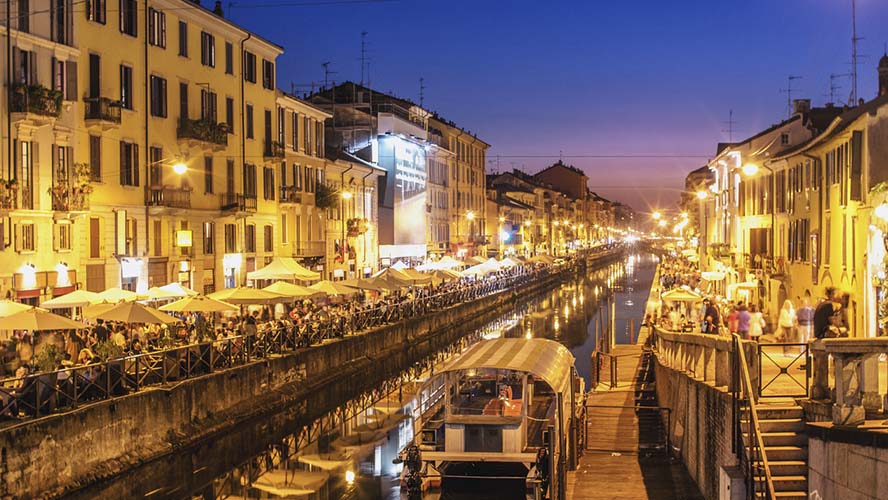
Today, all that remains is Naviglio Darsena, which once bore witness to Spain’s rule of Milan. This dock was built on the orders of Spanish governor Pedro Enríquez de Acevedo, Count of Fuentes, at the beginning of the 17th century and the two canals that remain, Naviglio Pavese and Naviglio Grande, converge at this point. Naviglio Pavese is 32 km long and connects Milan to Pavia; it was built in the 13th century. In turn, construction began on Naviglio Grande in the 12th century and ended in the middle of the 13th century. It’s 50 km long and for centuries was an important trade route with the centre of Europe via Lake Maggiore.
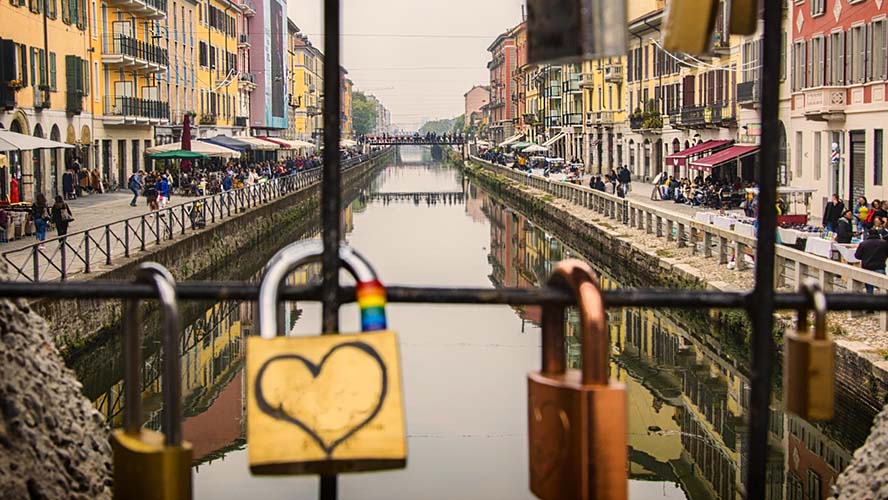
What to do in Navigli neighbourhood
Strolling alongside the waterways, going for an aperitif on a terrace overlooking the Darsena, visiting the street markets and enjoying a romantic dinner are just some of the activities you can enjoy by Milan’s picturesque canals. Here are some more ideas for your trip!
Vicolo delle Lavandaie
The Vicolo delle Lavandaie [Washing Alley] is at the start of Naviglio Grande and is one of the neighbourhood’s most charming spots; you can still see the old washing place with a thatched roof where women used to do their washing by hand. Today it’s one of the liveliest areas of Milan.
Mercatore Antiquario di Navigli
The Mercatore Antiquario di Navigli is held along Navigli Grande on the last Sunday of every month. This market has over 400 stalls selling antiques and second hand goods, and has become the perfect spot to while away hours searching for hidden treasures.
Go for a boat ride on Naviglio Grande
Go for a boat ride on Naviglio Grande and experience first-hand how the Milanese transported essential goods along the canal, which became the city’s main thoroughfare and made it an international trading hub for centuries.
Boat trips take you to admire the churches and mansions that border the canals and normally last around an hour. You can also book a longer trip that includes lunch, and even bicycle hire in the afternoon.
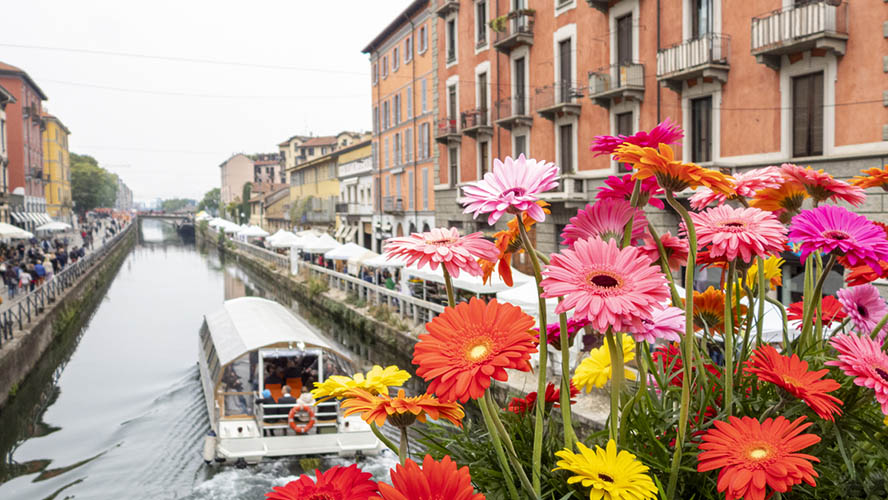
Church of San Cristóforo sul Naviglio
This fascinating religious complex is close to the Vicolo delle Lavandaie, at the start of Naviglio Grande, and actually consists of two churches attached to one another. The church on the left is the oldest; it was built in the Romanesque style in the 13th century when the canal was constructed, although the Gothic portico with its typical rose window was added a century later. It’s thought that the building sits on the site of a former Roman temple.
At the beginning of the 15th century, Milanese lord Gian Galeazzo Visconti added the second, predominately Gothic church as a ducal chapel. The complex was dedicated to Saint Christopher, patron saint against pestilence, in tribute to the end of a virulent epidemic, possibly the plague, that claimed the lives of 20,000 Milanese residents in around 1399. The church is therefore well worth visiting.
Go for an aperitif
On weekend evenings, particularly in summer, local residents typically meet in Navigli neighbourhood for the classic tradition of going for an aperitif. The choice of bars can almost be overwhelming and almost all of those in Naviglio Grande also have a delicious buffet.
There’s something for everyone: bars for a revitalizing brunch of local cheeses and cured meats on a Sunday morning, especially in the Vicolo delle Lavandaie area; elegant wine bars for a more mature crowd; even wild bars packed with twenty-somethings. Just don’t forget that everywhere will be full by 7 p.m.
Useful information:
How to get to Navigli neighbourhood:
- By metro. The closest metro stop is Porta Genova (line 2).
- By tram. The best way to get to Navigli neighbourhood from the centre is by tram line 3, getting off at Corso di Porta Ticinese or Piazza XXIV Maggio stops, or Alzaia Naviglio Pavese canal.
To make sure you don’t miss any of the attractions to be found in Navigli neighbourhood, we recommend taking a look at the itinerary suggested by the Milan Town Hall Tourist Information Centre.
(link a https://www.turismo.milano.it/wps/portal/poc?urile=wcm%3Apath%3ATUR_ES_ContentLibrary/sitecontent/scoprilacitta/itinerari/itinerario_i_navigli/)




































































